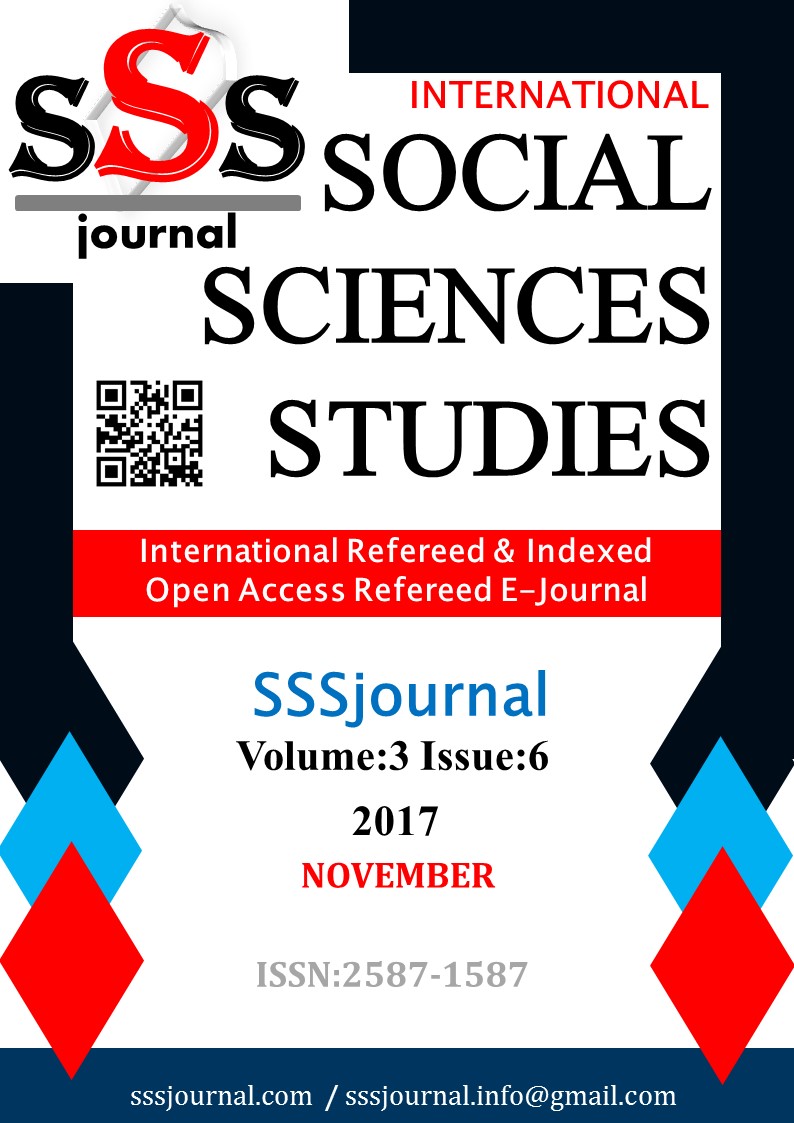Author :
Abstract
Aziz Mercurius yeraltı şehri Kapadokya bölgesinde, Aksaray ilinin Gülağaç ilçesine bağlı Saratlı Beldesinde yer almaktadır. Roma Dönemi'ne tarihlendirilen bu yeraltı şehrinde bulunan kilisede yer alan mezar odasında, Aksaray Müzesi tarafından 2012 yılında yapılan kurtarma kazısı sonucunda toplam 27 bireye ait iskelet kalıntısı ele geçirilmiştir. Bu bireylerin % 70,37’si (n: 19) bebek ve çocuklardan, % 29,63’ü (n: 8) erişkinlerden oluşmaktadır.
Bireylere ait dişler ve çeneler paleopatolojik açıdan incelendiğinde, daimi dişlerde diş çürüğüne % 9,09, hypoplasiaya % 1,52, diştaşına % 21,21 oranında rastlanmıştır. Daimi dişlerde en fazla gözlenen aşınma derecesi 4, süt dişlerinde ise 2'dir. Bütün dişler incelendiğinde, bazı dişlerde ileri derecelerde aşınma mevcuttur. Bu da, incelenen toplumun beslenme sisteminde dişlerde aşınmaya neden olabilecek sert ve iri taneli maddelerin varlığını düşündürmektedir. Bebek ve çocuklarda süt dişlerinde ve çenelerde aşınma ve apse dışında hiçbir patolojik bulguya rastlanmamıştır. Apse oluşumu da ileri derecede aşınmadan kaynaklıdır. Bu yeraltı şehrinde tahıl ambarlarına rastlanmıştır. Bu sonuç bize, incelenen toplumun beslenme sisteminde tarıma bağlı olarak karbonhidratlı besinleri tükettiklerini göstermektedir.
Bireylere ait iskelet kalıntıları paleopatolojik açıdan incelendiğinde, toplum genelinde birçok bireyde, metabolik, enfeksiyonel hastalıklar ve travmalar saptanmıştır. Özellikle enfeksiyonlar ve beslenme yetersizlikleri bebek ve çocukları olumsuz etkilemiştir. C vitamini eksikliğine bağlı olarak gelişen iskorbüt, demir eksikliği anemisi gibi lezyonlar beslenme yetersizliklerini gösteren örneklerdendir. Bebek ve çocuklarda saptanan travmalar da muhtemelen konjenital kaynaklıdır. Erişkin bireylerde gözlenen osteoarthrit, schmorl nodülü gibi eklem rahatsızlıkları ağır günlük aktivitelerle ilişkili olabilir. Hristiyanlık dinine geçen bu insanlar Roma baskısı nedeniyle bu yeraltı şehrinde saklanmak zorunda kalmışlar, muhtemelen çok zor yaşam koşullarında yaşamışlar ve birçok olanağa da ulaşamamışlardır. Çok az sayıda birey incelenebilmesine rağmen Aziz Mercurius populasyonu paleopatolojik açıdan Anadolu tarihinin Erken Hristiyanlık döneminin yaşam biçimine ışık tutması açısından oldukça önemlidir.
Keywords
Abstract
The underground city of Saint Mercurius is located in Saratlı, a town in the Gülağaç District of Aksaray Province, in the Cappadocia Region of Turkey. The residual skeletons of 27 individuals in total were discovered in 2012, during rescue excavations conducted by the field personnel of Aksaray Museum, inside the burial chamber of the church located in this underground city. Dating back to the Roman era, 70.37% (n: 19) of these skeletons were of infants and children and 29.63% (n: 8) were adults.
When the teeth and jaws of the individuals were paleopathologically examined, 9.09% dental caries, 1.52% hypoplasia and 21.21% calculus were detected in the permanent teeth. When these skeletons were evaluated in terms of dental wear, fourth grade dental wear was most commonly observed in the permanent teeth, whereas dental wear in the primary teeth was second grade. No pathological evidence was observed, except for dental wear in the primary teeth of the infants and children and abscess in the jaws. It is thought that the abscess formation was caused by advanced dental wear.
When these skeletons were evaluated in terms of other pathological formations, metabolic, infectious diseases and traumas were detected in many individuals of the society. Lesions, such as scurvy, developed due to the lack of vitamin C and iron deficiency anemia, which are symptoms of nutritional deficiency. It was observed in the examined population that infections and insufficient nourishment had more impact on the infants and children. It is also likely that some traumas identified in infants and children had congenital origins. Moreover, the joint disorders observed in adults, such as osteoarthritis and schmorl’s nodes, could not just be related to intense daily activities but must also be an indicator of the individual being elderly. These people, thought to have internalized Christianity, must have had to hide in the underground city because of the Roman oppression and evidently lived under unfavorable conditions. Although the number of examined individuals in the population of Saint Mercurius is few, the identified diseases and the life style are of great importance, in terms of providing an insight to the early Christian era in Anatolia.
Keywords
- Brickley, M. and Ives, R. (2006) Skeletal Manifestations of Infantile Scurvy, American Journal of Physıcal
- Brickley, M. and Ives, R. (2006) Skeletal Manifestations of Infantile Scurvy, American Journal of Physıcal Anthropology, 129: 163–172.
- Brooks, S.T. and Suchey, JM. (1990) Skeletal Age Determination Based on the Os Pubis: A Comparison of the Acsadi Nemeskéri and Suchey-Brooks Methods, Human Evolution, 5, 227–238.
- Brothwell, D.R. (1981) Digging up Bones, 3. Press, London: Oxford University Press.
- Buikstra, J.E. and Ubelaker, D. H. (1994) Standards for Data Collection from Human Skeletal Remains. Research Series, No. 44. Arkansas Archaeological Survey, Fayetteville.
- Byers, S.N. (2002) Introduction to Forensic Anthropology, A Textbook, Allyn and Bacon: Boston.
- Erdal, Ö.D. and Özbek, M. (2010) Değirmentepe (Malatya) Çocuk İskeletlerinin Antropolojik Analizi, 25. Arkeometri Sonuçları Toplantısı (25-29 May 2009), Denizli, 279-296.
- Hillson, S. (1990) Teeth, New York: Cambridge University Press.
- Ortner, D.J. and Putschar, W.G.J. (1985) Identification of Pathological Conditions in Human Skeletal Remains, Washington: Smithsonian Institution Press.
- Ortner, D. J. and Mays, S. (1998) Dry-bone Manifestations of Rickets in Infancy and Early Childhood, International Journal of Osteoarchaeology, 8: 45–55.
- Ortner, D.J., Kimmerle E.H. and Diez M. (1999) Probable Evidence of Scurvy in Subadults from Archeological Sites in Peru, American Journal of Physıcal Anthropology, 108: 321–331
- Ortner, D. J., Butler, W., Cafarella, J. and Milligan, L. (2001) Evidence of Probable Scurvy in Subadults from Archeological Sites in North America, American Journal of Physıcal Anthropology, 114: 343–351.
- Szilvassy, J. and Kritscher, H. (1990) Estimation of Chronological Age in Man Based on the Spongy Structure of Long Bones, Anthrop. Anz., 48 (3): 289-298.
- Ubelaker, D.H. (1978) Human Skeletal Remains: Excavation, Analysis, Interpretation, Chicago: Smithsonian Institution, Aldire Publishering Company.
- Workshop of European Anthropologist (1980) Recommandations for Age and Sex Diagnoses of Skeletons, Journal of Human Evolution, 9 (7): 518–549.
- http://aksarayfx.mekan360.com/haberler_5024,0-aksaray-haberleri-2-bin-yillik-gizem-kirkgoz-aziz- mercurius-yeralti-sehri.html. Date of Access: 31.05.2017.
- http://arkeolojihaber.net/2011/12/20/kilise-icinde-20-mezar-bulundu/. Date of Access: 8 Mart 2017. http://www.cumhuriyet.com.tr/haber/diger/303642/Aziz_Mercurius_Yeralti_Sehri_turizme
- kazandiriliyor.html. Date of Access: 08.05.2017.
- http://www.haberler.com/kapadokya-da-aziz-mercurius-yeralti-sehri-turizme-8517027-haberi/). Date of Access: 31.05.2017.
- http://www.haberturk.com/ekonomi/turizm/haber/1251899-aziz-mercurius-turizme-aciliyor/2. Date of http://www.gulagac.gov.tr/ekonomik-durum. Date of Access: 07.06.2017.





